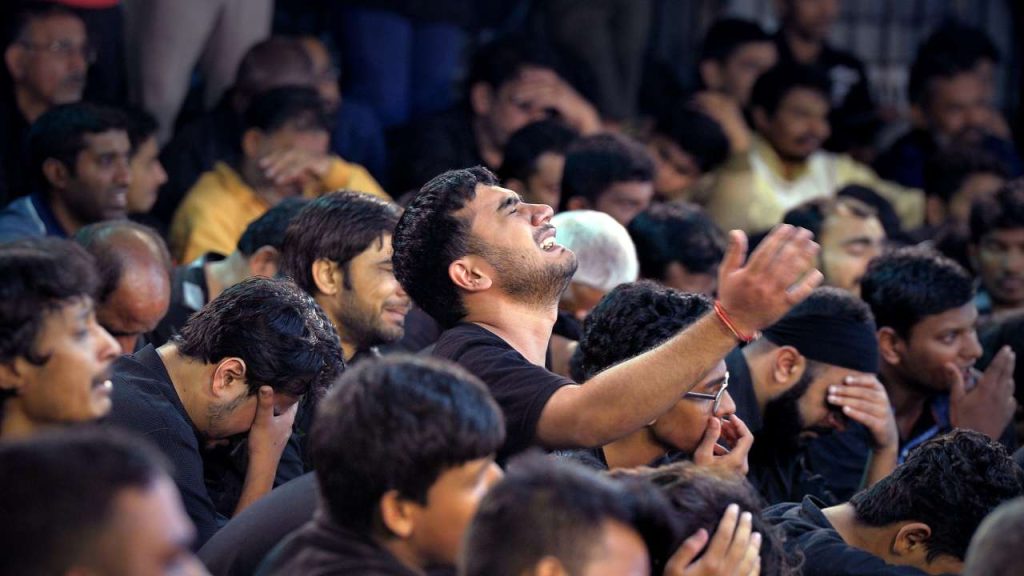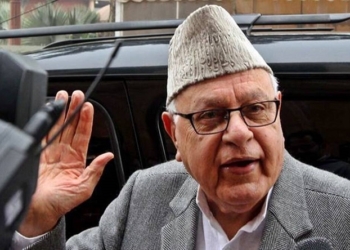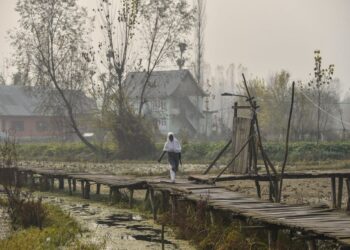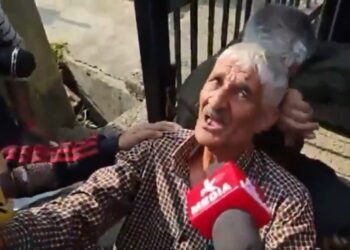 Raziqueh Hussain meets Mumbai-based jeweler Abu Talib Rizvi, a dab hand at declaiming Mir Anees’s poetry, has compiled a lively anthology of the best of such offerings in books which are to be attractively illustrated, in photos and videos. His recitals are a treat for listeners of Mir Anees, the great Urdu poet known for his enchanting elegies, everywhere
Raziqueh Hussain meets Mumbai-based jeweler Abu Talib Rizvi, a dab hand at declaiming Mir Anees’s poetry, has compiled a lively anthology of the best of such offerings in books which are to be attractively illustrated, in photos and videos. His recitals are a treat for listeners of Mir Anees, the great Urdu poet known for his enchanting elegies, everywhere
THE mood at the gathering is somber as Abu Talib Rizvi ascends the pulpit. Subtly he begins reciting verses from the marsiya an elegy or long poem penned by 18th century poet Mir Anees.
Men weep openly as tears flow down their cheeks. Anguished cries ring out and echo in the hall so that one can almost imagine the martyrdom of Imam Hussain (The Prophet’s grandson) unfold right there, right then, in that hall. Wet eyes gaze into space, as if looking at the scene described in Talib’s verses, their hearts breaking at the tragedy that befell Imam Hussain. This atmosphere of sorrow fills the hall, an air of heightened spirituality but one laden with heartbreak.
In the sub-continent, the marsiya is a fully developed form of Urdu poetry which recreates events with deep feelings that moves the audience to tears. These verses make listeners emotionally charged. The martyrdom of Imam Hussain, the grandson of the Prophet of Islam in the battle of Karbala, was the only subject of this sacred art form which prospered in the reign of the Awadh rulers who emanated from Khorasan, Iran. Almost all Urdu marsiyapoets use Karbala as a symbol of great tragedy or epic battle between good and evil.
In this genre, Mir Anees needs no introduction. He made recitation into an art form, known as marsiya khwani.
Though he was not an historian, he understood human psychology as no one else did. He made one small tragic incident, such as the thirst of the children, the brutality of the forces of Yazeed, the heat of the mid-day sun, the frightful darkness of the night and, above all, the unsurpassed bravery of the small band who died in Imam Hussain’s company, and breathe life into these. ” The high moral values and a message to fight against injustice are the elements of marsiya that have a universal appeal”, says Abu Talib Rizvi, aMumbai-based jeweler, who has perfected the art of marsiya khwani and has brought this art form to Mir Anees fans as well as the general public.
“Marsiya is not merely Urdu poetry, it is also a performance art where emotions of the words need to be conveyed to the audience so that they visualize the battlefield, feel the pain of sufferings, and learn the lessons of Karbala”, says Talib, who has an entire website (www.miranees.com) dedicated to this great poet and his art form.
He says, “For those who have had the pleasure of reading and hearing Mir Anees marsiyas can attest that nothing else can evoke with such clarity and such depth, the memory, the emotion and the pathos of Karbala, as do these marsiyas.” His website is an attempt to bring to the new generation the beauty of Anees’ words in English as well as Hindi. “Who, if not Mir Anees can bring Karbala to life for our youngsters? Who can tell the tale as well as he did? A tale told in a manner so as to evoke within us grief, pain, and above all, love for the Ahlul Bayt (Prophet’s household)?,” he asks, adding, “If our youngsters cannot understand the words of these memorable poets because they don’t know Urdu, why not bring the words to them in the language that they do understand? This website is a humble attempt to accomplish this task,” he says.
Talib, a poet in his own right, was exposed to the poetry of Mir Anees, whose epic marsiyawere part of his staple diet from a very early age. His mother, Shama Rizvi is also an aficionado of the marsiya and is a talented zakira (a person who lectures on some aspect of the holy Quran, Islamic philosophy, ethics etc. usually intertwined with a perspective on the history of Karbala) from Mumbai who has written a tafseer or translation on the holy Quran. “My mother is the inspiration behind all my work. She used to read Mir Anees poetry to me every night. I have always been fascinated and had yearned to learn about the actual battle part of Karbala. So one day she read the marsiya Jab qataa ki masaafat-e-shab aaftaab ne and gave me the book and asked me to learn Urdu first if I wanted to understand Anees poetry better. I did and now here I am translating and writing a book on 1,000 titles of Imam Hussain in Anees’s poetry! It should be out soon. So I’m ever grateful to her”, he claims.
Talib is also planning another book which will have pictures and poetry together. Also video images are on the cards, something on the lines of moving pictures along with poetry.
There are certain nuances that good marsiya reciters need to follow, says Talib. “The language needs to be appropriate. When a child speaks, the language is a child’s; when a woman speaks, it is of a woman; when a man speaks, it is of a man. Pronunciations and intonations are pivotal too”, he reveals.
Talib uses the sob in his voice, the restrained gesture with as little as a mere eye-lid and achieves his end. A good marsiya reciter makes the scene live before the eyes of the imagination of his listeners. With change of expression, with an underlining of a gesture, using the highs and lows of his voice, Talib can touch and rip the heart apart. Caravan.
Follow this link to join our WhatsApp group: Join Now
Be Part of Quality Journalism |
Quality journalism takes a lot of time, money and hard work to produce and despite all the hardships we still do it. Our reporters and editors are working overtime in Kashmir and beyond to cover what you care about, break big stories, and expose injustices that can change lives. Today more people are reading Kashmir Observer than ever, but only a handful are paying while advertising revenues are falling fast. |
| ACT NOW |
| MONTHLY | Rs 100 | |
| YEARLY | Rs 1000 | |
| LIFETIME | Rs 10000 | |








